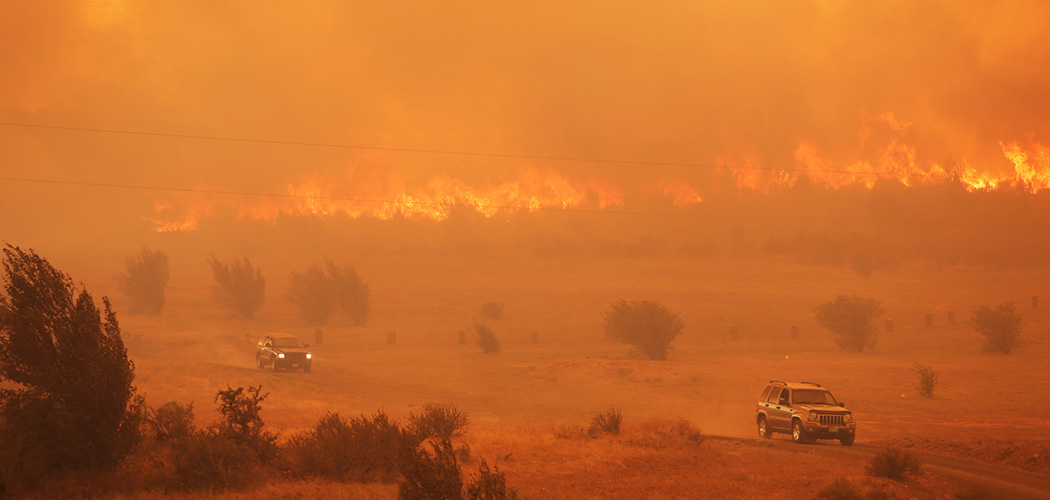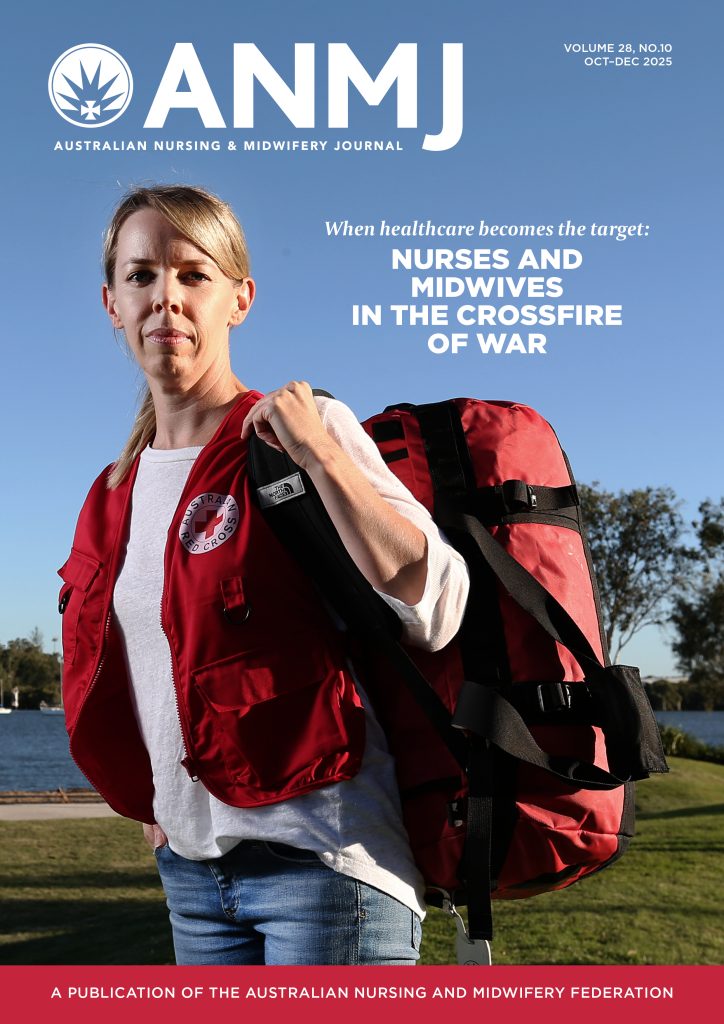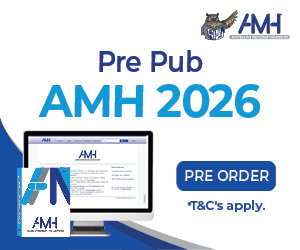The 2024 report Climate-Driven Extreme Weather Events: Australian Nurses’ and Midwives’ Experiences highlights the extraordinary leadership of nurses and midwives during some of Australia’s most severe climate-driven disasters.1 This three-part ANMJ series presents case studies that showcase how these incredible healthcare professionals lead responses in times of crisis, demonstrating resilience, adaptability, and compassion when their communities were at their most vulnerable.
The following case study examines the experiences of Carolyn Antoniou, a registered nurse, who was on duty during a devastating bushfire in Milton, New South Wales. On Christmas Day, Carolyn’s leadership was tested as fires surrounded the town, staff shortages strained the local hospital, and power outages disrupted critical healthcare services.
It was Christmas Day. Milton, a small coastal town was surrounded by escalating bush fires burning to the north and south. This town has a population of less than 2,000 but these numbers swell considerably during peak holiday seasons.
Carolyn was the registered nurse ‘in charge’ on the afternoon shift and responsible for both the 20-bed Milton hospital and the emergency department. The hospital was desperately short staffed. Many of the rostered staff were either protecting their properties or unable to get to work because the highway was blocked. After a ‘ring around’ a few of the local nurses agreed to leave their Christmas celebrations and come and help.
At 3pm the hospital’s electricity failed and Carolyn had to manually turn on the outside generator. This provided for one light in theatres, maternity, the nurse’s station and the emergency department. The patient monitors had limited battery life and were not able to be recharged. Carolyn was particularly concerned about a very unwell patient in the emergency department who needed constant monitoring. As there wasn’t an onsite doctor, the visiting medical officer (VMO) was called and, together with the two ED nurses, assumed responsibility for critically ill patients including firefighters needing treatment for smoke inhalation and respiratory burns.
Community members and stranded holiday makers began to come to the emergency department asking for help. Some needed critical medications like insulin. Because the town’s electricity was cut off, people who were oxygen dependent also came to the hospital. Others were asking for baby food and formula as all the shops were closed.
Because a number of people were stranded, unable to return home and in need of somewhere to stay, the team contacted the State Emergency Service who provided stretchers that were set up along all the corridors. The kitchen staff cooked and catered for patients, evacuees and staff, as well as doing rounds with a tea trolley and making sure everyone had something to eat and drink.
With no way of knowing how long the highway would be blocked, and with people attending the hospital requesting medications and essential supplies, the local pharmacist was contacted. Even though it was Christmas Day, he opened the chemist, working with the hospital to ensure people were able to have access to the essential medications they needed. Similarly, the owner of the town’s IGA opened the grocery store offering to supply anything that was needed. He turned up at the hospital with torches and batteries – before this the nurses had been relying on tiny neuro torches. As early evening approached, the air became thick with smoke and it began to get dark. While the fires continued, police and fire control kept in contact with Carolyn, checking on patient and staffing numbers in case the situation worsened. The local ambulance crews, with all hands-on-deck, were checking in regularly to ensure everyone was ok and they assisted with patient assessments and care in the ED in between call outs.
Only one of the monitors still had battery life and this was being used by a woman in congestive cardiac failure who was very unwell. Normally this type of patient would be transferred to a larger hospital. Because there were no helicopters going in or out on that day, the nurses had to do the best they could to manage her in the resus room. But they were concerned about what would happen if she deteriorated, especially with it getting dark. Just as one of the maintenance men was planning to access some of the lights that had been used for recent road works, the electricity came back on. Carolyn recalled the immense sense of her relief she felt knowing that they would not be heading into a frightening night without any electricity.
The fires worsened over the next week and during this time blackouts were frequent. The stretchers remained set up in corridors to provide for the needs of increasing numbers of patients and community members. Staffing rosters were abandoned – it became a daily matter of seeing who was able to get to the hospital, who was cut off, and who needed to stay and protect their property.
Carolyn recalled that this situation was effectively managed because of effective communication and teamwork and, as it was a small town, there was a strong sense of community, close connections and a lot of trust. For Carolyn, there was a feeling of satisfaction after the fires; she and her team had risen to the challenge, worked cohesively, and responded to rapidly unfolding and complex situations, with limited access to external support.
Carolyn’s experience highlights the indispensable leadership of nurses during climate-driven emergencies, particularly in small communities with limited resources. Her ability to maintain calm, co-ordinate care, and ensure the well-being of patients, evacuees, and staff during a devastating bushfire demonstrates the strength and adaptability of the nursing profession. With bushfires and other extreme weather events becoming more severe due to climate change, Carolyn’s story serves as a reminder of the pressing need for robust disaster preparedness and the integration of climate literacy into healthcare practices. Nurses and midwives are at the forefront of these challenges, playing an essential role in protecting the health and resilience of communities in an increasingly volatile environment.
Distinguished Professor Tracy Levett-Jones is based in the School of Nursing and Midwifery in the Faculty of Health at the University of Technology Sydney. Tracy is also the Lead, Planetary Health Collaborative for Nurses and Midwives and the Co-convenor of the Climate Change and Health Collaborative and the Research Institute for Innovative Solutions for Wellbeing and Health (INSIGHT).
Dr Aletha Ward is a Senior Research Fellow in the Poche Centre at the University of Queensland.
References
- Levett-Jones, T., Ward, A., Best, O., Bonnamy, J., Cornish, J. Correia Moll, E., Greenhill, J., Foster, A, Hastie, C., Pitkin, S., Roden, J. Tunks Leach, K. & Whiteing, N. (2024). Climate-driven extreme weather events: Australian nurses’ and midwives’ experiences. University of Technology Sydney. https://planetaryhealthcare.com.au/wp-content/uploads/sites/17/2024/10/84665_RKH-Planetary-Health-Collaborative-Adaption-report-web.pdf
The authors would like to acknowledge the contributions of the full authorship team for Climate-driven extreme weather events: Australian nurses’ and midwives’ experiences.1The authors also extend their gratitude to Carolyn Antoniou, Registered Nurse, for her invaluable insights and for sharing the experiences of her community








